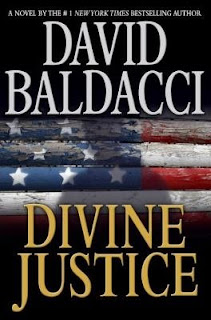November 23, 2008
Over the years I’ve been attracted to books on the formation of our nation and biographies of the leaders who did it. I’ve been intriqued by that period in our history when a few dedicated people were able to do such apparently great things. Given what I’ve seen of national-level leaders and politicians over the last few decades, it seems almost miraculous that a group of intelligent and well-intentioned men were available at the time our budding nation most needed them. So when I saw Inventing a Nation on the table at Costco a few years ago, I had to take it home. It looked like a book I’d want to read.
 The book sat on my to-be-read shelf for a while, and eventually I started it. I got through 75 pages and found myself confused and bored. Perhaps it’s because I often read myself to sleep at night, and this book is too highbrow to be read that way. So I lost interest and set the book aside…until I picked it up again a couple weeks ago, this time committed to finishing it. I started over on page one.
The book sat on my to-be-read shelf for a while, and eventually I started it. I got through 75 pages and found myself confused and bored. Perhaps it’s because I often read myself to sleep at night, and this book is too highbrow to be read that way. So I lost interest and set the book aside…until I picked it up again a couple weeks ago, this time committed to finishing it. I started over on page one.Well, this is not a history book, at least not what I expected. It’s a 189 page rambling essay on our founding fathers, focused on the presidencies of Washington and Adams. It describes the aspirations and relationships of a dozen or so prominent men of that period, including Hamilton, Madison, and Marshall. Through the narrative we learn of their conflicting convictions, which led to the formation of political parties—concurrent with the birth of our constitutional government. The Federalists (led by Hamilton) wanted an expansive central government and were pretty much ready for war with whoever seemed aggressive at the moment—France, England, Spain. (You can always make more heroes and money during a time of war.) The Republicans (led by Jefferson) focused more on holding the central government to the constraints of the Constitution and protecting citizens’ rights. A key conflict arose after the passing of the Alien and Sedition Acts of 1798 by the Federalists. The Republicans saw that as violating the first amendment right of free speech, and they fought to overturn it.
This was indeed a period of exploring and inventing. How does the chief executive relate to the houses of Congress? How does the Supreme Court relate to the other two branches? The Constitution says who declares wars, but how does it really work? Vidal gives us a view into the personalities and relationships of the men feeling their way into a new realm. For the most part I found his descriptions to be not very complimentary, although he was more forgiving of Washington’s faults.
Throughout the book Vidal injects comparisons to government and politics in the twenty-first century. Today’s Republicans are sort of like the Federalists, and today’s Democrats like the early Republicans. Our founding fathers seemed to be working to their own agendas, gathering support behind the scenes, and sometimes acting duplicitously. Hamilton, for example, tried to lead President Adams’ cabinet to war with France, while Adams found other means to thwart Hamilton. Vidal implies things haven’t changed much today.
Inventing a Nation was a little hard for me to read, even when I was wide-awake. Vidal rambles a lot, although he sticks more or less to the timeline of the first twelve years of our Constitution-based government. There are a lot of backwards references to what I had read already, but maybe forgot. And I needed to have (but didn’t) a dictionary by my side as I read the book.
Did I get what I expected out of Inventing a Nation? Vidal portrays our earliest politicians as not a lot different than today’s leaders. Perhaps human nature hasn’t changed much in the last 200 years. Perhaps the true success was the work of a few truly altruistic leaders—Jefferson, Franklin, others—who set the stage for the Constitution and our new government. But that’s not what this book was about. It was the story of a bunch of very human men figuring out how to get our nation rolling. I guess they succeeded.








